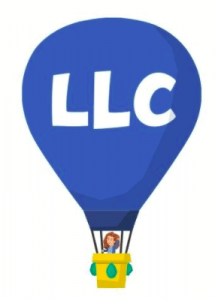LLC Subsidiary
An LLC subsidiary is a limited liability company that is majority owned by another company. Starting an LLC subsidiary can benefit your business in several ways: it decreases litigation risk, safeguards profits from risky endeavors, and lets you expand far beyond your initial branding. Let’s go over what exactly an LLC subsidiary is and how to start one.
In this article:
What is an LLC Subsidiary?
LLC Subsidiary Benefits
Start a New LLC Subsidiary
LLC Subsidiary FAQ
What is an LLC Subsidiary?
An LLC subsidiary is an LLC that is owned by another company, called a holding company.
This form of business management is often used by big businesses that want to fully saturate a market, like how Walt Disney also owns Marvel Studios, Lucasfilms, and 20th Century Studios. In this example, Walt Disney is the holding company, or parent company, and Marvel is one of the subsidiaries, or child companies.
For an LLC to be considered a subsidiary, its holding company must own at least 50% of the business, which is available through membership interest. Additionally, since the parent company and the child company are legally separate entities, they must each file separate Articles of Organization and maintain separate operating agreements.
Though the parent company must be the majority owner of the subsidiary, both businesses can have overlapping additional owners/members. Plus, the child company’s internal documents are typically based on the parent company’s. This can make subsidiaries easier to set up and manage, since the processes can be the same for both businesses.
LLC Subsidiary Benefits
Creating LLC subsidiaries offer parent companies benefits otherwise unavailable to the business.
For example, subsidiaries inject new interest in your original company, and your original company offers subsidiaries its good faith to gain consumer trust and interest in an otherwise unknown and untested business.
This is just one of the many benefits of starting a subsidiary over forming a disconnected business. Let’s go over a few of the advantages of creating a subsidiary, including additional liability protections, new branding opportunities, tax benefits, and more.
Additional Liability Protections
Liability protection is a way to keep your assets safe. For example, a company’s liability protection keeps your personal assets safe from your business’ debts. Likewise, an LLC subsidiary’s liability protection keeps your main business’ assets safe from the subsidiary’s debts.
For example, if the owners of Tina’s Treats decide they want to expand to sell dog treats, too, that opens up a whole new customer base and line of revenue. However, it also opens up a new world of liability risks. By creating a subsidiary instead of just expanding the original business, the owners are keeping Tina’s Treats safe from any potential lawsuits or debt that the dog treat company might incur, and vice versa. This makes a risky move a little bit safer.
Increased Visibility and Credibility
By linking together several businesses, multiple business’ are able to bolster each other. For example, PepsiCo is a parent company with dozens of snack and beverage related subsidiaries. Instead of the owners starting a disconnected business to sell a new item, PepsiCo can create a subsidiary. This new subsidiary would have the backing of a billion dollar company in order to secure funding, branding opportunities, and consumer awareness.
New Branding Opportunities
Forming a subsidiary lets a business to reach into new target markets without risking its current customer base.
When a business commits to one brand image, it can be hard to reach into new markets without tanking your original image. For example, a small batch soap business that primarily sells to luxury hotels might struggle to launch a line of soaps for assisted living homes without losing their main customer base. Starting a new subsidiary allows them to enter both markets while maintaining positive brand experiences for both.
Shared Resources
Many LLC subsidiaries share resources with their parent company, including real estate, management, and connections. For example, if the business’ offices are in the same building, they can share building managers, custodians, and administrative staff. Additionally, many parent companies share marketing and advertising departments. This reduces cost for the new business and allows for consistency throughout the parent company’s full family tree.
Tax Benefits
Unless the LLC subsidiary elects to be taxed as a C-corp, the LLC subsidiary is taxed as a pass-through entity. This means that the members (including the parent company) are responsible for reporting the income tax of the subsidiary. The parent company reports all the profits and losses from their subsidiaries on one tax return, which might reduce the amount of taxes owned by the parent company altogether. Keep in mind that the parent company reports the same percentage of earnings as the percentage of the business they own.
Note: Transferring money from one business to another in order to create larger profits or losses is an act of fraud, even though all the money is reported on the same return.
How to Create a LLC Subsidiary
Starting an LLC subsidiary is the same process as starting any LLC. You appoint a registered agent, file the appropriate paperwork with the business division of your state government, get any licensing you need, and start selling something.
The only difference is that your business must be majority owned by the parent company. Typically, the parent company is the first business formed, followed by any subsidiaries. However, this is not a requirement.
Holding Company
A holding company is just what it sounds: it “holds” the other companies under its umbrella. This is the parent company.
In many cases, a holding company does not offer products or services to the public. Instead, its purpose is to manage the subsidiaries. This includes making managerial, legal, and financial decisions for the subsidiaries.
For example, Alphabet Inc. is a holding company that has no business operations itself, but rather is the parent company to several child companies, including Google. This would be an example of vertical integration, where the parent company makes profit exclusively through the child companies.
Another way to be a holding company is horizontal integration, like Meta. Meta owns Facebook, Instagram, WhatsApp, and more, most of which compete in the same industry. They are “equal” companies, though Meta owns them all as a holding company. Profit here expands by giving the same consumers multiple options and covering more of the market than the businesses could alone.
To start an LLC subsidiary through a holding company, form a new LLC and make sure that your parent company is listed as the majority owner on the LLC’s Articles of Organization and operating agreement.
Learn how to form a holding company.
LLC Subsidiary FAQs
The fees associated with starting an LLC differ from state-to-state. There is no additional fee for being a subsidiary for another company.
This depends. Companies are allowed to share profits, so long as it does not break any state or federal laws. However, shifting assets to avoid paying a lawsuit or to look more or less financially stable is a form of fraud and will result in swift legal action.
Yes. If you do not fund your LLC subsidiary, you are allowing that business to run as if it is bankrupt. While liability protection is one of the main benefits of having a subsidiary, the law might revoke this liability protection if it seems like your LLC is only there to avoid paying back creditors or debts as this is another form of fraud.
Yes and no. Yes, the subsidiary’s revenue must be reported through filed taxes. No, an LLC subsidiary does not need to file its own taxes—usually. Since an LLC’s default tax status is as a pass-through entity, the subsidiary’s owners (usually the parent LLC in this case) must report all revenue on their own tax return.
An exception to this is if the LLC subsidiary elects to be taxed as a C-corp, in which case they would file their own taxes.
Yes, a single-member LLC (SMLLC) can be a subsidiary. If the parent company is the sole owner of the child company, the subsidiary is a SMLLC.
No. A series LLC is similar in concept to a holding company, but they’re not the same. In a series LLC, multiple divisions or cells exist within one parent LLC. Each has its own liability, assets, and purpose. However, they’re all within the same LLC.
Series LLC are typically easier to form and manage than a traditional holding company. This is because many states allow you to submit one formation document, reducing the amount of business formation paperwork and their associated fees.






